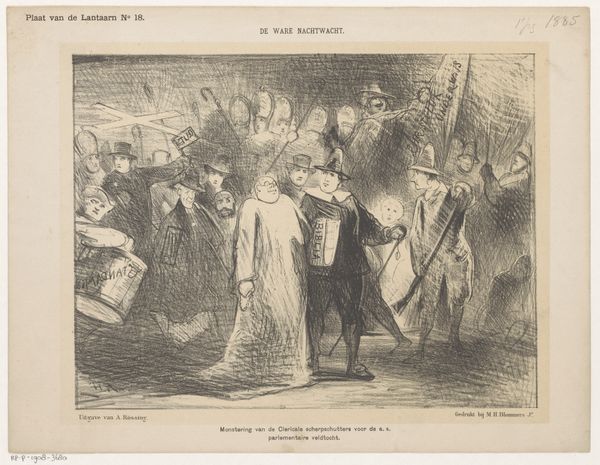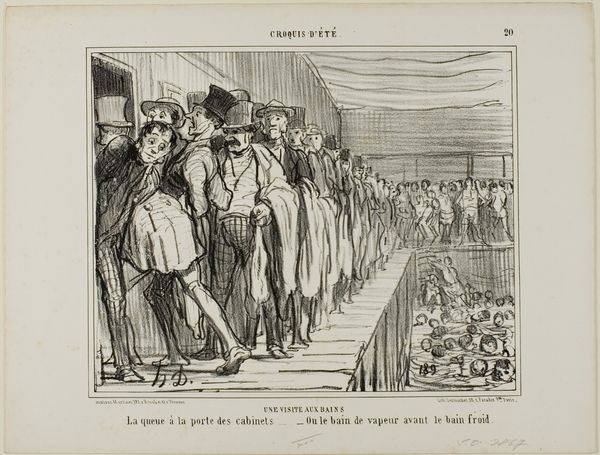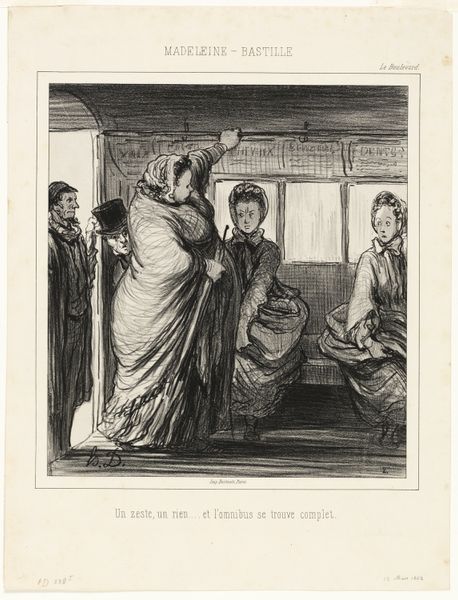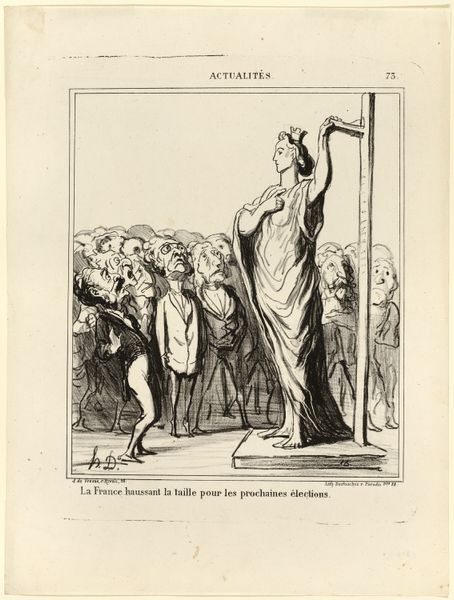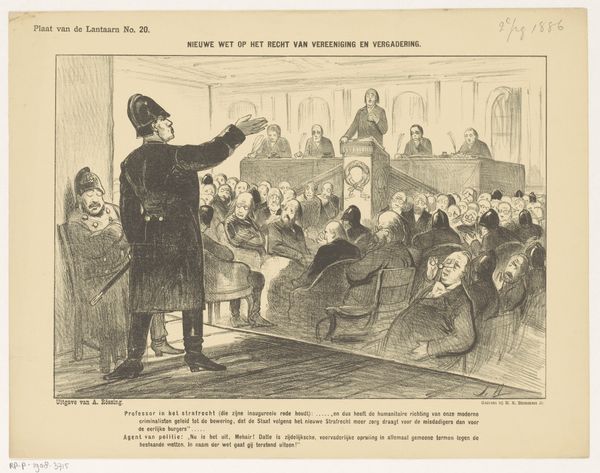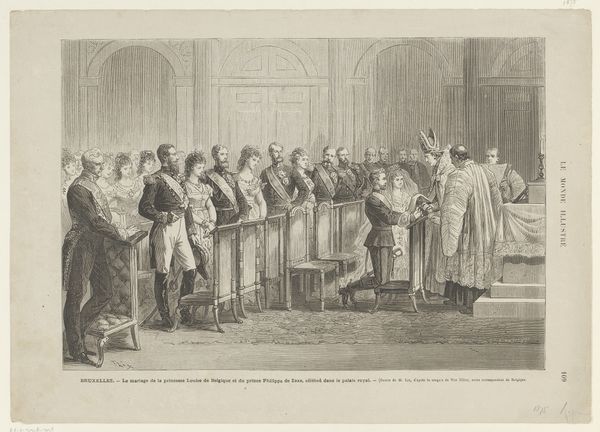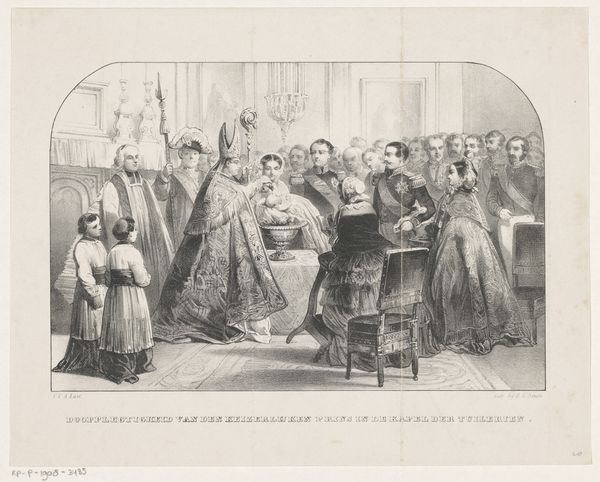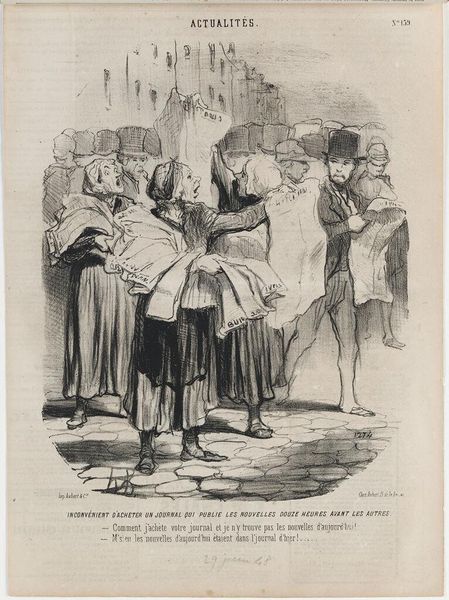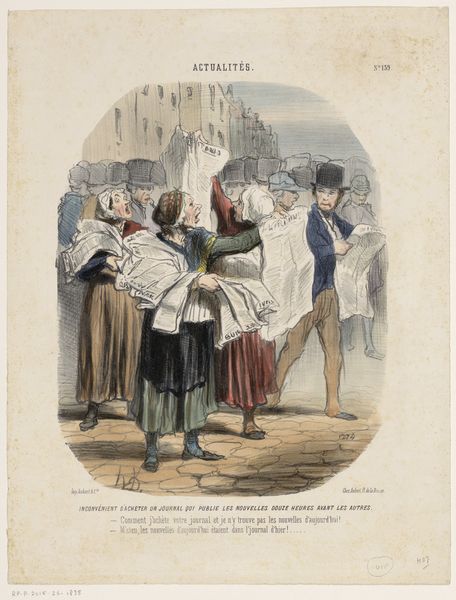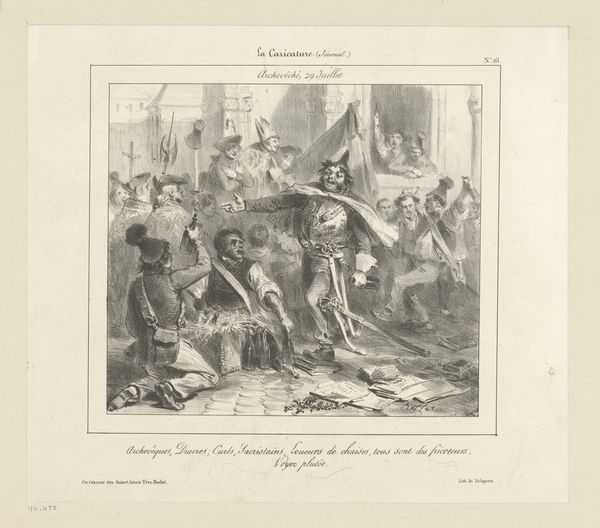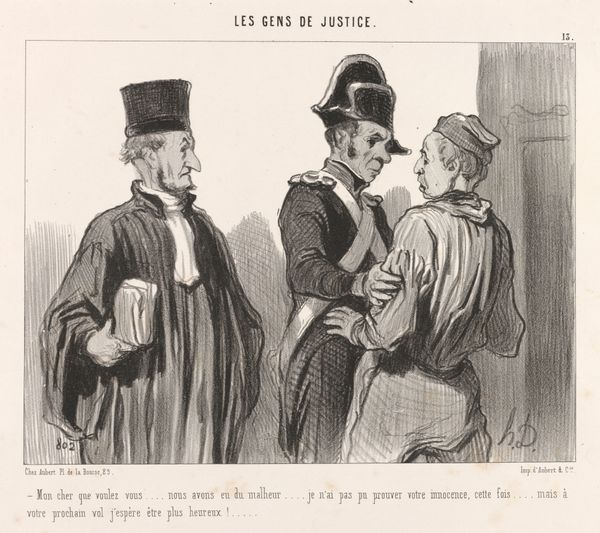
drawing, print, ink, engraving
#
drawing
# print
#
caricature
#
old engraving style
#
ink
#
line
#
genre-painting
#
engraving
#
realism
Dimensions: height 260 mm, width 335 mm
Copyright: Rijks Museum: Open Domain
Editor: This print, "Spotprent over minister Du Tour van Bellinchave," made in 1886 by Jan Holswilder, utilizes ink, drawing, and engraving to create quite a satirical scene! The scale and caricature feel…almost cruel. How do you interpret this work? Curator: This print is deeply rooted in the political and social landscape of the Netherlands in 1886. Given the title, the central figure is undoubtedly a satirical depiction of Minister Du Tour van Bellinchave, presented as Sinterklaas, Saint Nicholas. Think about what Sinterklaas traditionally represents: generosity, gift-giving, justice. Here, it seems those concepts are being twisted, made ironic. What does the setting suggest to you? Editor: It seems…oppressive? Almost like a prison with those barred windows, and everyone seems rather downtrodden, except maybe the Minister. Curator: Exactly! Holswilder critiques power through the lens of social commentary. Consider the other figures. Why are they included? What purpose do they serve in communicating Holswilder’s message about Minister Du Tour van Bellinchave? It appears the artist is presenting a clear view of society to their contemporary viewers. It may very well have served to reinforce already present notions in some circles. Editor: So, by twisting the imagery of Saint Nicholas, who is normally seen as generous, and setting him in a prison-like setting, the artist is trying to reveal that Minister Du Tour van Bellinchave’s actions are contrary to justice and public welfare? It is interesting to see how cultural figures become entangled in politics. Curator: Precisely. And don't overlook the overt racism with “Zwarte Piet”. This piece invites reflection on the relationship between those in power, cultural expectations, and political realities in that specific time period. It served a vital public role in sparking debate and questioning authority. Editor: It really highlights the political and social power of art! Thank you; I hadn't considered the role of familiar characters and public sentiment.
Comments
No comments
Be the first to comment and join the conversation on the ultimate creative platform.
